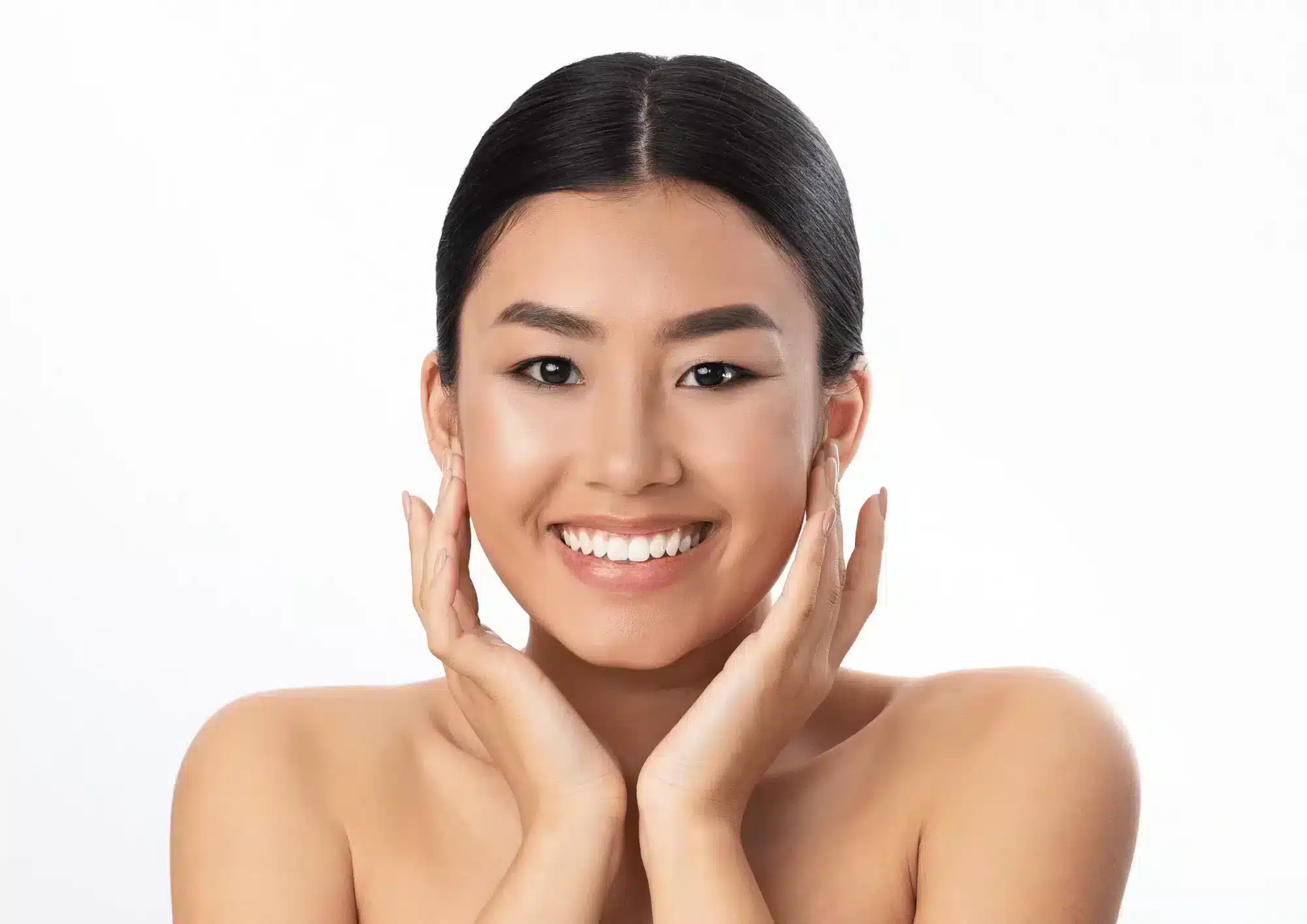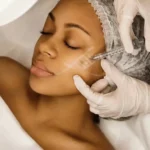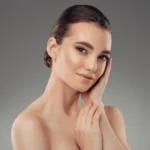

In the pursuit of youthful and radiant skin, patients are increasingly turning to dermal fillers as a safe and effective non-surgical option. They have gained immense popularity in recent years, offering a way to combat the signs of aging without the need for invasive procedures. But what are dermal fillers, and are they all the same?
From plumping lips to rejuvenating sunken cheeks, dermal fillers offer a customizable solution for individuals seeking a refreshed and more youthful appearance. Join us as we explore the world of dermal fillers and uncover the secrets behind their transformative effects.
What Are Dermal Filler Injections?
Dermal fillers are products used in cosmetic procedures that involve strategically injecting substances into the skin to restore volume, smoothen wrinkles, and enhance facial contours. These injections are typically composed of various materials, with hyaluronic acid and collagen-stimulating agents being the most commonly used.
During the procedure, a trained medical professional carefully administers the filler solution into specific areas of the face, such as the cheeks, lips, nasolabial folds, or under-eye hollows, based on the desired outcome. The fillers work by plumping and lifting the skin, reducing the appearance of wrinkles, fine lines, and sagging.
The filler injections are popular due to their non-surgical nature, providing individuals with a convenient and relatively low-risk option for rejuvenating their appearance. The results are usually immediate and, depending on the type of filler used, can last anywhere from several months to a year or more.
Dermal Filler Usage and Application
The process of injecting dermal fillers involves several key steps to ensure safe and effective administration. The procedure should only be performed by a qualified medical professional, such as a dermatologist or a plastic surgeon, who has received specialized training in aesthetic treatments.
The practitioner assesses the patient’s facial anatomy, skin condition, and areas that require treatment. They explain the available options, discuss expectations, and address any questions or concerns. Topical numbing cream or local anesthesia may be applied to minimize discomfort during the procedure, depending on the patient’s preference and the type of filler used.
The practitioner injects the dermal filler into the predetermined sites using a fine needle or a blunt-tipped cannula. They may use a combination of techniques, such as linear threading, fanning, or cross-hatching, depending on the treatment area and the specific goals of the procedure.
It’s important to note that the exact process may vary depending on the specific dermal filler being used, the treatment area, and the individual patient’s needs. The entire procedure is typically completed within a relatively short time, usually ranging from 15 minutes to an hour, depending on the extent of the treatment.
Indications and Contraindications of Dermal Fillers
Now that we answered the question “What are dermal fillers?” and know what they are typically used for, it’s time to discuss the ideal candidate for the procedure. Can anyone get this treatment, and what indications should potential patients know about?
Dermal fillers are generally safe and suitable for a wide range of individuals seeking aesthetic enhancements or facial rejuvenation. However, certain factors may influence whether someone is an adequate candidate for this procedure, and some individuals should avoid getting dermal fillers.
Here is some general guidance on who can get dermal fillers:
- Adults over the age of 18: Dermal fillers are typically recommended only for individuals who have reached adulthood.
- Healthy individuals: Good overall health is essential for undergoing any cosmetic procedure.
- Those with specific cosmetic concerns: Dermal fillers can address a variety of concerns, such as wrinkles, volume loss, and facial asymmetry. They can also enhance specific features like lips or cheeks.
- Realistic expectations: Candidates should have realistic expectations about the potential outcomes when using dermal filler treatments.
- Non-smokers: Smoking can affect the healing process and increase the risk of complications, so avoiding smoking before and after the procedure is generally advised.
As for the dermal filler contraindications, they’re as follows:
- Pregnant or breastfeeding women: The safety of dermal fillers during pregnancy or breastfeeding has not been established, so it is generally recommended to postpone the treatment.
- Allergic reactions: Individuals with known allergies to specific dermal filler substances or their components should avoid using those fillers.
- Active skin infections or inflammation: Dermal fillers should not be administered in areas with active infections or inflammation to minimize the risk of complications.
- Bleeding disorders or medications: People actively taking medications that increase the risk of bleeding, such as blood thinners, may need to avoid dermal fillers or adjust their medication regimen under the guidance of their healthcare provider.
- Compromised immune systems: Individuals with certain autoimmune diseases or weakened immune systems may have an increased risk of complications and should consult their healthcare provider before considering dermal filler treatments.
Consultations and proper medical assessment for dermal filler indications are required before proceeding with the treatment.
Different Dermal Filler Types
Not all dermal fillers are the same. Over the years, manufacturers have developed different methods of producing filler products, each with unique composition and properties.
Here are the most common types of filler products:
- Hyaluronic Acid Fillers: These fillers contain hyaluronic acid, a naturally occurring substance in the body that helps maintain skin hydration and volume. HA fillers are versatile and can be used to add volume, smooth wrinkles, and enhance facial contours. They provide natural-looking results and are reversible if necessary.
- Calcium Hydroxylapatite (CaHA) Fillers: CaHA fillers contain tiny calcium microspheres suspended in a gel-like solution. They stimulate collagen production and provide both immediate and long-lasting results. These fillers often treat moderate to severe facial wrinkles and volume loss.
- Poly-L-Lactic Acid (PLLA) Fillers: PLLA fillers stimulate collagen production over time, gradually improving volume and skin texture. They are typically used for deeper facial folds and to restore facial contours affected by age-related volume loss.
- Polymethylmethacrylate (PMMA) Fillers: One of the less common types of dermal fillers. These products consist of tiny PMMA microspheres suspended in a collagen gel. They provide immediate volume and stimulate collagen production for long-term results. PMMA fillers are often used to correct deep wrinkles and acne scars and augment facial features.
Dermal Filler Aftercare
As we’ve previously established, the process of injecting dermal fillers is quick and painless. Patients can continue their daily activities immediately, which is one of the main reasons this procedure has become so popular. Having no downtime is a significant upside for many people.
But that doesn’t mean your patients should be completely careless if they wish to achieve optimal treatment results. Since the effects of dermal fillers can last for up to 18 months, it’s crucial to instruct the patients on proper aftercare.
The most crucial period is the first 24 hours. This is the time during which the fillers are settling in, so it’s essential to prevent them from shifting around the treated area. Patients should avoid certain activities, including:
- Touching or applying pressure to the treated area;
- Strenuous activities and exercise;
- Alcohol consumption;
- Putting on makeup if it would cover the treated area;
- Exposure to extreme temperatures and humidity (saunas, hammams, solariums).
Proper hydration is vital during this time. If the patient experiences pain and severe discomfort, they may apply an icepack to the treated area and use painkillers.
Conclusion
By now, you should have a better understanding of what facial and dermal filters are and the different types of these products available on the market. Their popularity is on the rise as patients continue to seek rejuvenation methods that do not involve invasive procedures or surgeries. Although not a permanent solution, dermal fillers are an efficient and effective way to restore one’s youthful appearance with near-immediate results.
FAQ
How long do dermal fillers last?
Typically, dermal fillers last anywhere from 12 to 18 months. This highly depends on the type of filler, the amount of product used, and the patient’s metabolism, age, and lifestyle.
What is the difference between Botox and dermal fillers?
Aside from the differences in their contents – Botox is based on botulinum toxin while dermal fillers typically contain hyaluronic acid – their method of action is also vastly different. Botox works by relaxing muscles. What are dermal fillers, then? They are fillers that improve volume and stimulate collagen production, giving patients a rejuvenated look.
How risky are dermal fillers?
Dermal fillers are generally considered safe, and if injected in a sterile environment by a medical professional, the risk of infection or complications is nonexistent. Still, certain people do have allergic reactions to these products, while most patients tend to experience slight bruising and an itching sensation in the treated areas.
Aesthetic products generally refer to a broad category of items designed to enhance or improve one's appearance, often focusing on skincare, beauty, and personal grooming. These products are typically used to maintain or enhance physical attractiveness and may include a wide range of items intended for both professional and personal use. Here are some common types of aesthetic products:
-
Skincare Products: Including cleansers, moisturizers, serums, and treatments designed to address various skin concerns such as acne, aging, hyperpigmentation, and sensitivity.
-
Cosmetics: Makeup products such as foundations, concealers, eyeliners, lipsticks, and eyeshadows used to enhance facial features and achieve desired looks.
-
Hair Care Products: Shampoos, conditioners, styling products, and treatments to maintain and improve the health and appearance of hair.
-
Fragrances: Perfumes and colognes used to enhance personal scent and attractiveness.
-
Dental Care Products: Toothpaste, mouthwash, whitening treatments, and dental floss aimed at maintaining oral hygiene and enhancing smile aesthetics.
-
Personal Grooming Tools: Including razors, electric shavers, trimmers, and grooming kits used for hair removal and personal hygiene.
-
Beauty Devices: Devices such as facial cleansing brushes, LED light therapy masks, and microcurrent devices designed for at-home skincare treatments.
-
Nutritional Supplements: Supplements aimed at promoting skin health, hair growth, and overall well-being, often containing vitamins, minerals, and antioxidants.




